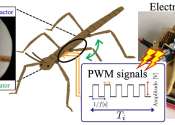Insect cyborgs: Toward precision movement
Insect cyborgs may sound like science fiction, but they're a relatively new development that uses electrical stimuli to control the movement of insects. These hybrid insect computer robots, as they are scientifically called, ...
Oct 4, 2023
0
45









